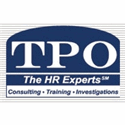To hit the hiring TARGET, we need to A.I.M. properly. We need to incorporate questions and processes to detect Abilities, Interest and Manageability of the candidates. When it comes to perfecting your A.I.M., Abilities are the easiest part. We can consider related education and experience, ask open-ended questions, and have candidates illustrate their skills. Often, that is where we stop.
We often neglect to explore whether the candidate is truly Interested (willing & motivated) to excel at this job in your practice. The issue of Manageability is even more illusive. After all, how can we predict if this person will comply with our standards and policies, get along with coworkers, and accept leadership and constructive feedback? Will this be the Employee of the Year, or the worst renegade on record? So what questions can you ask to help predict a candidate’s Interest and Manageability?
Interest
- Why did you apply for this job?
- What other employers have you applied with?
- What do you know about our company?
- How does this job fit in with where you see yourself in a few years?
- What was the best thing about your last job? What did you like least about it?
- Describe your idea of the ideal (job, boss, and coworker).
- What have you done on your own time and with your own money to make yourself better qualified for this type of position?
- Give an example of when you went above and beyond what your job required.
We are all in the business of treating and pleasing our patients. Your employee Interest in meeting or exceeding your patient’s expectations is critical. Have the candidate’s role-play through some difficult scenarios. First ask what they would do, but then ask them to role play how they would do it. Would their approach and communication style align with your standards?
Manageability
- What kinds of people do you work best with?
- Describe a conflict you had with a co-worker.
- How important is communication in your job?
- Describe the best boss you have had. What about the worst boss? (Note: if they describe you, think again about the match!)
- Give an example of a company policy you disagreed with, and how you responded.
- How would your coworkers describe you?
- What will your boss say when you quit?
- When I ask your previous employer, what will he/she say were your greatest strengths? Which areas will he or she say you could improve?
- Describe your dependability?
- Tell me about a time when a supervisor told you about a shortcoming in your performance. How did you respond, and what did you do to correct the problem?
- What do you like least about your past positions?
Don’t forget to use scenarios and role plays here. You can learn a lot about a person’s manageability with those techniques.
Watch for clues in all the answers. Does this job and your company fit with their expectations and experiences? Will it keep their interest and will they be motivated to stay and succeed? All of your hiring decisions may not result in bulls eyes, but with some structured questions, you can sure reduce the likelihood of missing the target all together.
TPO is an award-winning firm established in 1991 made up of a group of highly experienced, nationally certified HR experts and trainers. TPO is licensed by the State of California (PI-25638) to provide investigative services. For more information, please contact us at 800-277-8448 or visit our web site www.tpohr.com.
Contents © 2011 TPO Human Resource Management. No part of this article may be reproduced, excerpted or redistributed in any form without express written permission from TPO Human Resource Management.
